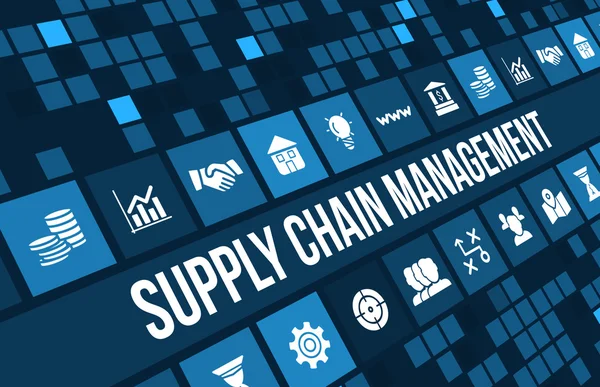Proposing a Framework for Increasing Visibility Supply Chain Management

Despite the increasing number of technologies available to monitor sustainability and performance, supply chain visibility remains a challenge for many businesses. To help companies achieve this goal, a practical framework is needed to assess their current operations and identify opportunities for improvement.
This blog post will discuss how organizations can leverage supply chain management e-solutions to increase end to end supply chain visibility across multiple business activities and provide actionable insights into areas that need special attention. We’ll propose a four-step framework focused on improving tactical planning, data gathering & analysis, collaboration with suppliers and customers, and utilizing integrated systems to optimize inventory levels and transport costs.
What Elements Should Be Considered When Creating a Visibility Framework?
When creating a visibility framework, there are many elements to consider. Firstly, the visibility platform should be thoroughly researched to ensure that it is compatible with existing supply chain digitalization systems and processes. It is essential to evaluate the features of any visibility technology to ensure that it can meet the needs of each user or organization involved in the supply chain process. Additionally, data security measures must be addressed when selecting a visibility platform, as this will ensure that all parties’ data remains safe and secure throughout its use and transmission.
Furthermore, costs associated with implementing and maintaining the visibility platform must also be taken into account when creating a visibility platform. Lastly, scalability should also be considered when selecting a visibility technology; if necessary, the system should be able to expand or contract to accommodate potential changes in the supply chain process. By taking all of these elements into account, organizations can create an effective and efficient visibility framework.
When implementing a visibility platform, it is essential to ensure that it is correctly integrated with existing supply chain digitalization systems. This will help maximize efficiency and minimize errors within the supply chain process.
Additionally, data security measures should be implemented to keep any data shared among parties secure; this could include encryption protocols or access control mechanisms. Finally, costs associated with the visibility platform must also be considered to make budgeting decisions accordingly.
What Is the Role of Data and Analytics in a Comprehensive Visibility System?
Data and analytics are essential components of a comprehensive supplier visibility system. With the correct data, companies can gain insights into supplier drafts, inventory levels, supplier performance metrics, and much more.
This makes it easier for organizations to make informed decisions about supplier relationships and supply chain operations. By utilizing advanced analytics techniques such as predictive modeling and machine learning algorithms, businesses can stay ahead of emerging trends and potential risks in supplier relationship management.
Data-driven visibility systems enable organizations to monitor better supplier compliance with quality standards, safety protocols, environmental policies, and other regulations. By using sophisticated data analysis tools, companies can quickly identify potential problems in the supply chain that could lead to costly delays or disruptions in the delivery of materials. By incorporating data and analytics into automated visibility systems, companies can increase supply chain visibility and efficiency while minimizing risks.
Additionally, data-driven supplier visibility systems open new opportunities for better supplier engagement and collaboration. By leveraging logistics analytics to gain deeper insights into supplier performance metrics such as delivery times, shipment quality, and cost optimization potentials, organizations can further collaborate with their suppliers to drive more efficient operations and optimize the customer experience.
Furthermore, data-driven supplier visibility systems make it easier for companies to track inventory levels across their entire supply chain in real-time. This provides more transparency and allows companies to identify potential issues before they become a problem.
How Do Different Systems and Processes Interact with One Another?
Order fulfillment is the process of receiving and completing customer orders. It involves various systems, processes, and integrations that must work together seamlessly for order fulfillment to be successful. For example, order entry systems, inventory management systems, payment processing systems, shipping systems, and customer service departments all interact with one another to fulfill customer orders. As technology advances and supply chains become increasingly digitalized, order fulfillment processes are becoming more efficient through real-time tracking capabilities.
Companies now have access to data about their orders that allow them to monitor the status of each order from order entry through delivery. This helps ensure that orders are fulfilled quickly and accurately.
Additionally, companies can leverage this data to understand their customers’ needs better and adjust order fulfillment processes that will improve customer satisfaction. By understanding how order fulfillment systems interact with one another and leveraging data to make improvements, companies can ensure order fulfillment is as efficient and accurate as possible.
How Can a Visibility Framework Be Designed to Maximize Efficiency?
A visibility framework that maximizes efficiency should incorporate supplier drafts, visibility workflows, and real-time tracking. Supplier drafts are essential for streamlining supplier management and communication. This allows suppliers to submit draft agreements quickly and easily without going through lengthy paperwork. Visibility workflows allow internal teams and external stakeholders to be updated on the progress of supplier contracts in real-time.
This ensures that all parties stay informed about supplier contract changes and can initiate corrective action if needed. Real-time tracking also enables companies to monitor supplier performance at any time, ensuring maximum efficiency and accuracy when managing supplier relationships. With a proper visibility framework, businesses can ensure supplier management runs smoothly while maximizing efficiency.
In addition to the elements mentioned above, other vital considerations can further maximize the efficiency of a visibility framework, such as:
- Transparent and standardized processes: Define transparent processes for each stage of the supplier management cycle, including onboarding, contracting, performance monitoring, and offboarding. Standardize these processes across the organization to ensure consistency and avoid redundancies.
- Data integration: Integrate data from different systems and sources to enable a unified view of supplier performance. This will help identify areas of improvement and facilitate data-driven decision-making.
- Automation: Leverage automation to reduce manual effort and improve efficiency. This can include automated alerts for contract renewal, automated risk assessments, and automatic performance monitoring.
- Collaborative tools: Provide collaborative tools for stakeholders to work together on supplier management. This can include shared calendars, task lists, and real-time communication channels.
- Performance metrics: Define and track performance metrics to measure the efficiency of the visibility framework. This can include metrics such as cycle time for contract approval, supplier performance scorecards, and cost savings achieved through better supplier management.
By incorporating these elements into a inventory visibility, businesses can maximize efficiency in supplier management and improve overall performance.






